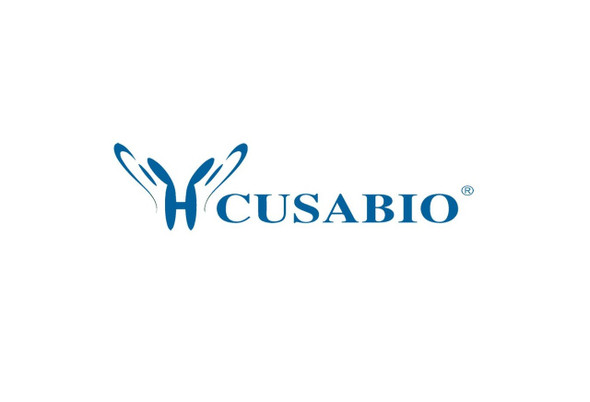Cusabio Human Recombinants
Recombinant Human Tescalcin (TESC) | CSB-EP023393HU
- SKU:
- CSB-EP023393HU
- Availability:
- 3 - 7 Working Days
Description
Recombinant Human Tescalcin (TESC) | CSB-EP023393HU | Cusabio
Alternative Name(s): Tescalcin ;TSC
Gene Names: TESC
Research Areas: Signal Transduction
Organism: Homo sapiens (Human)
AA Sequence: GAAHSASEEVRELEGKTGFSSDQIEQLHRRFKQLSGDQPTIRKENFNNVPDLELNPIRSKIVRAFFDNRNLRKGPSGLADEINFEDFLTIMSYFRPIDTTMDEEQVELSRKEKLRFLFHMYDSDSDGRITLEEYRNVVEELLSGNPHIEKESARSIADGAMMEAASVCMGQMEPDQVYEGITFEDFLKIWQGIDIETKMHVRFLNMETMALCH
Source: E.coli
Tag Info: N-terminal 6xHis-SUMO-tagged
Expression Region: 2-214aa
Sequence Info: Full Length of Mature Protein
MW: 40.6 kDa
Purity: Greater than 90% as determined by SDS-PAGE.
Relevance: Functions as an integral cofactor in cell pH regulation by controlling plasma mbrane-type Na+/H+ exchange activity. Promotes the maturation, transport, cell surface stability and exchange activity of SLC9A1/NHE1 at the plasma mbrane. Promotes the induction of hatopoietic st cell differentiation toward megakaryocytic lineage. Essential for the coupling of ERK cascade activation with the expression of ETS family genes in megakaryocytic differentiation. Also involved in granulocytic differentiation in a ERK-dependent manner. Inhibits the phosphatase activity of calcineurin.
Reference: The finished DNA sequence of human chromosome 12.Scherer S.E., Muzny D.M., Buhay C.J., Chen R., Cree A., Ding Y., Dugan-Rocha S., Gill R., Gunaratne P., Harris R.A., Hawes A.C., Hernandez J., Hodgson A.V., Hume J., Jackson A., Khan Z.M., Kovar-Smith C., Lewis L.R. , Lozado R.J., Metzker M.L., Milosavljevic A., Miner G.R., Montgomery K.T., Morgan M.B., Nazareth L.V., Scott G., Sodergren E., Song X.-Z., Steffen D., Lovering R.C., Wheeler D.A., Worley K.C., Yuan Y., Zhang Z., Adams C.Q., Ansari-Lari M.A., Ayele M., Brown M.J., Chen G., Chen Z., Clerc-Blankenburg K.P., Davis C., Delgado O., Dinh H.H., Draper H., Gonzalez-Garay M.L., Havlak P., Jackson L.R., Jacob L.S., Kelly S.H., Li L., Li Z., Liu J., Liu W., Lu J., Maheshwari M., Nguyen B.-V., Okwuonu G.O., Pasternak S., Perez L.M., Plopper F.J.H., Santibanez J., Shen H., Tabor P.E., Verduzco D., Waldron L., Wang Q., Williams G.A., Zhang J., Zhou J., Allen C.C., Amin A.G., Anyalebechi V., Bailey M., Barbaria J.A., Bimage K.E., Bryant N.P., Burch P.E., Burkett C.E., Burrell K.L., Calderon E., Cardenas V., Carter K., Casias K., Cavazos I., Cavazos S.R., Ceasar H., Chacko J., Chan S.N., Chavez D., Christopoulos C., Chu J., Cockrell R., Cox C.D., Dang M., Dathorne S.R., David R., Davis C.M., Davy-Carroll L., Deshazo D.R., Donlin J.E., D'Souza L., Eaves K.A., Egan A., Emery-Cohen A.J., Escotto M., Flagg N., Forbes L.D., Gabisi A.M., Garza M., Hamilton C., Henderson N., Hernandez O., Hines S., Hogues M.E., Huang M., Idlebird D.G., Johnson R., Jolivet A., Jones S., Kagan R., King L.M., Leal B., Lebow H., Lee S., LeVan J.M., Lewis L.C., London P., Lorensuhewa L.M., Loulseged H., Lovett D.A., Lucier A., Lucier R.L., Ma J., Madu R.C., Mapua P., Martindale A.D., Martinez E., Massey E., Mawhiney S., Meador M.G., Mendez S., Mercado C., Mercado I.C., Merritt C.E., Miner Z.L., Minja E., Mitchell T., Mohabbat F., Mohabbat K., Montgomery B., Moore N., Morris S., Munidasa M., Ngo R.N., Nguyen N.B., Nickerson E., Nwaokelemeh O.O., Nwokenkwo S., Obregon M., Oguh M., Oragunye N., Oviedo R.J., Parish B.J., Parker D.N., Parrish J., Parks K.L., Paul H.A., Payton B.A., Perez A., Perrin W., Pickens A., Primus E.L., Pu L.-L., Puazo M., Quiles M.M., Quiroz J.B., Rabata D., Reeves K., Ruiz S.J., Shao H., Sisson I., Sonaike T., Sorelle R.P., Sutton A.E., Svatek A.F., Svetz L.A., Tamerisa K.S., Taylor T.R., Teague B., Thomas N., Thorn R.D., Trejos Z.Y., Trevino B.K., Ukegbu O.N., Urban J.B., Vasquez L.I., Vera V.A., Villasana D.M., Wang L., Ward-Moore S., Warren J.T., Wei X., White F., Williamson A.L., Wleczyk R., Wooden H.S., Wooden S.H., Yen J., Yoon L., Yoon V., Zorrilla S.E., Nelson D., Kucherlapati R., Weinstock G., Gibbs R.A.Nature 440:346-351(2006)
Storage: The shelf life is related to many factors, storage state, buffer ingredients, storage temperature and the stability of the protein itself. Generally, the shelf life of liquid form is 6 months at -20?/-80?. The shelf life of lyophilized form is 12 months at -20?/-80?.
Notes: Repeated freezing and thawing is not recommended. Store working aliquots at 4? for up to one week.
Function: Functions as an integral cofactor in cell pH regulation by controlling plasma membrane-type Na(+)/H(+) exchange activity. Promotes the maturation, transport, cell surface stability and exchange activity of SLC9A1/NHE1 at the plasma membrane. Promotes the induction of hematopoietic stem cell differentiation toward megakaryocytic lineage. Essential for the coupling of ERK cascade activation with the expression of ETS family genes in megakaryocytic differentiation. Also involved in granulocytic differentiation in a ERK-dependent manner. Inhibits the phosphatase activity of calcineurin.
Involvement in disease:
Subcellular Location: Nucleus, Cytoplasm, Membrane, Lipid-anchor, Cell membrane, Cell projection, lamellipodium, Cell projection, ruffle membrane
Protein Families: Calcineurin regulatory subunit family, CHP subfamily
Tissue Specificity: Expressed in mature megakaryocytes and polymorphonuclear granulocytes (at protein level). Abundantly expressed in heart. Also expressed at a lower level in adult testis and salivary gland, and in the placenta.
Paythway:
Form: Liquid or Lyophilized powder
Buffer: If the delivery form is liquid, the default storage buffer is Tris/PBS-based buffer, 5%-50% glycerol. If the delivery form is lyophilized powder, the buffer before lyophilization is Tris/PBS-based buffer, 6% Trehalose, pH 8.0.
Reconstitution: We recommend that this vial be briefly centrifuged prior to opening to bring the contents to the bottom. Please reconstitute protein in deionized sterile water to a concentration of 0.1-1.0 mg/mL.We recommend to add 5-50% of glycerol (final concentration) and aliquot for long-term storage at -20?/-80?. Our default final concentration of glycerol is 50%. Customers could use it as reference.
Uniprot ID: Q96BS2
HGNC Database Link: HGNC
UniGene Database Link: UniGene
KEGG Database Link: KEGG
STRING Database Link: STRING
OMIM Database Link: OMIM










